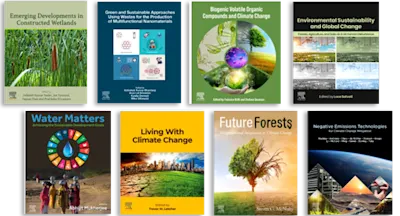
Biotechnologies for Wastewater Treatment and Resource Recovery
Current Trends and Future Scope
- 1st Edition - November 15, 2024
- Latest edition
- Editors: Arun Lal Srivastav, Inga Zinicovscaia, Liliana Cepoi
- Language: English
Biotechnologies for Wastewater Treatment and Resource Recovery: Current Trends and Future Scope presents up-to-date insights on the water crisis stemming from wastewater produc… Read more

- Covers a thorough analysis of various bioremediation approaches such as: phytoremediation, myco-remediation, bio-stimulation, bio-augmentation, rhizoremediation, etc.
- Offers the most up-to-date information on integrated wastewater treatment using biological and physicochemical methods
- Includes case studies on bioremediation of domestic/industrial wastewater for the elimination of heavy metals/emerging water contaminants/pesticides/microplastics, amongst others
2. Significance of biological approaches/bioremediaion of wastewater treatment over physico-chemical methods: A comparative analysis
3. Role of bacteria in bioremediation of wastewater and resource recovery
4. Recent trends of phyto-remediation for the wastewater treatment and resource recovery
5. Role of bio-refineries in wastewater treatment and bio-energy production
6. Bio-augmentation for heavy metal treatment present in wastewater
7. Wastewater treatment and resource recovery through Rhizoremediation
8. Bioremediation of pesticides present in water: State of art and future scope
9. Role of fungi in wastewater treatment: Recent trends and mechanism
10. Limitations and challenges of bioremediation approach: Alternative solutions
11. Integration of bioremediation and physico-chemical methods for wastewater treatment and resource recovery
12. Scope of bioremediation of wastewater for emerging water contaminants like pharmaceuticals, microplastics, antibiotics etc.
13. Artificial wetlands construction for controlled bioremediation of wastewater
14. Valorisation of wastewater treatment through bioremediation approach
15. Sustainable wastewater treatment through micro-algae and other biotic community for bioenergy production
16. Role of bioremediation of wastewater in sustainable development goals and circular economy
17. Role of plants as bioindicators of water pollution and treatment of water contaminations
18. Role of bryophytes as biomonitors and bioindicators of water pollution and as bioremediation tools
19. Application of modern tools for the real time monitoring of bioremediation approach and its advantages
20. Case studies on bioremediation of domestic/industrial wastewater for the elimination of heavy metals/emerging water contaminants/pesticides/ microplastics etc.
21. Case studies on bioenergy production and wastewater treatment.
22. Case study on the biopolymer production through wastewater treatment using biotechnology
23. Feasibility of reuse of treated wastewater through bioremediation approach for domestic or industrial applications
24. Industrial scope of recovered valuable resources, types and application: Technical and Economic feasibilities”.
25. Future perspectives of wastewater treatment.
26. Bioremediation for emerging organic pollutants (pesticides, dyes etc): Present and Future
27. Role of biotechnology in the recovery of nutrients from wastewater
- Edition: 1
- Latest edition
- Published: November 15, 2024
- Language: English
AS
Arun Lal Srivastav
IZ
Inga Zinicovscaia
Dr. Inga Zinicovscaia is working as the Head of the Sector in the Frank Laboratory of Neutron Physics of the Joint Institute for Nuclear Research, Dubna, Russia. She has obtained her Doctor of Science degree from Moldova State University, Chisinau, Republic of Moldova on the study of the impact of some metals determined by neutron activation analysis on the quality of the environment. Her research interests include water and soil remediation, assessment of the air quality, nanotoxicology, waste management, evaluation of food quality, and radioecology. She has published 200 research papers in prestigious ISI journals (Elsevier, Springer, IWA, Taylor & Francis, and so on) as well as several book chapters and monography on wastewater bioremediation. She is also a section editor in several journals and project supervisor of more than 10 projects between Joint Institute for Nuclear Research and member states on different environmental subjects.
LC